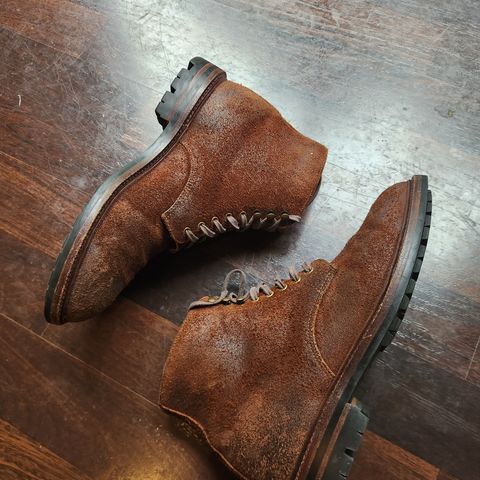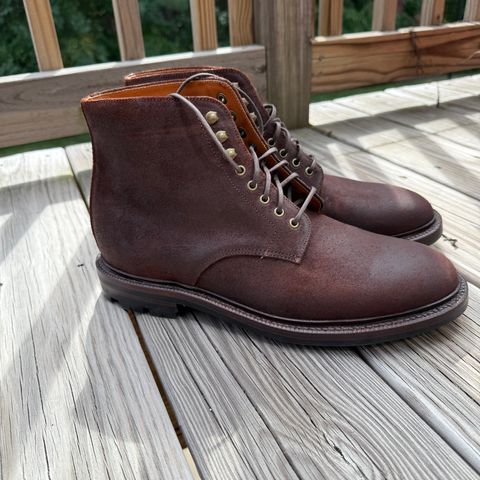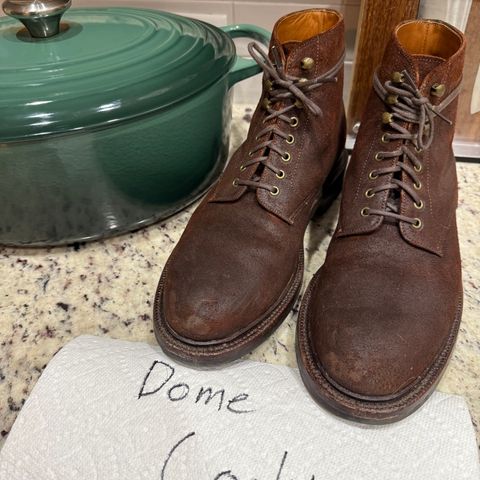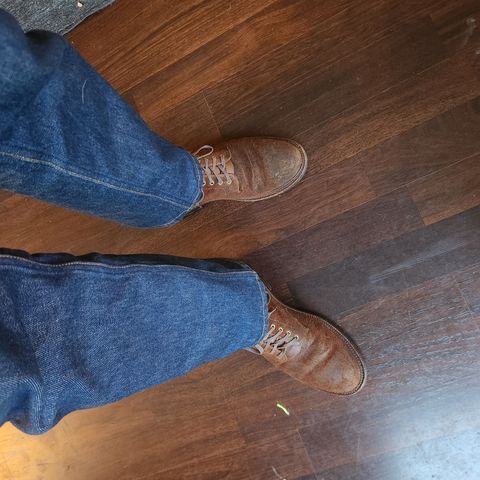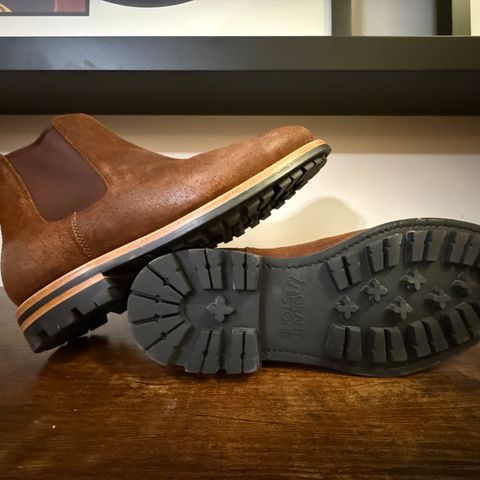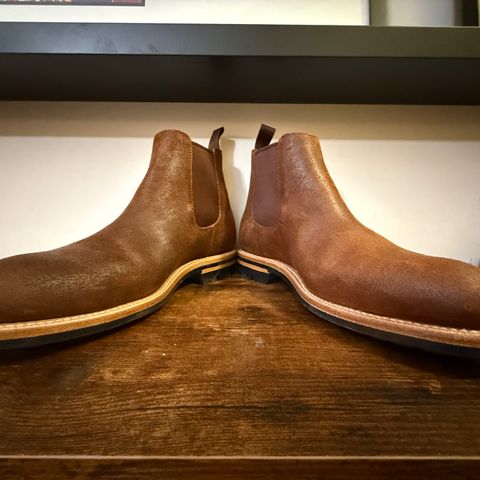About
C.F. Stead Roughout is a type of reverse suede leather produced by Charles F. Stead, a tannery based in Leeds, England. The leather uses the flesh side of the hide as the outer surface while the grain side faces inward, creating a traditional heavy-weight leather marketed as "Hunting Suede."
About
C.F. Stead Roughout is a type of reverse suede leather produced by Charles F. Stead, a tannery based in Leeds, England. The leather uses the flesh side of the hide as the outer surface while the grain side faces inward, creating a traditional heavy-weight leather marketed as "Hunting Suede."
C.F. Stead describes their roughout as featuring a natural full grain on the reverse side, available with oiled or waxed finishes and in fully waterproof versions. The leather has a rougher nap compared to buffed suede, using part of the leather's corium left more or less untreated. The amount of untreated corium affects the leather's roughness and texture.
Construction and physical characteristics
Roughout leather uses the underside or flesh side of an animal hide as the exterior surface, with the smooth grain side positioned inside. This construction method retains the top grain layer but reverses it, distinguishing roughout from split suede, which uses only the loose fibrous corium without the tight grain structure.
The leather exhibits a rougher nap than buffed suede due to its use of the leather's corium, the loose fiber layer beneath the grain. The degree of roughness varies depending on how much corium remains untreated during the tanning process. The back side of roughout leather resembles untreated smooth full grain leather.
Treatment and finishes
C.F. Stead offers roughout leather with oiled or waxed treatments and produces fully waterproof versions. The leather can be treated with oils or waxes to modify its character and performance characteristics. These treatments affect both the appearance and functional properties of the finished leather.
The leather can be brushed and re-waxed to restore its original appearance after periods of heavy wear, allowing for maintenance and renewal of the protective surface treatments.
Performance characteristics
Roughout leather demonstrates greater durability compared to split suede due to its retention of the full grain layer structure. The construction method and treatments contribute to its suitability for footwear applications requiring extended wear resistance.
C.F. Stead roughout products
C.F. Stead produces several distinct roughout leather types with specific technical characteristics.
Rambler is a shrunken fiber suede with thickness ranging from 1.2 to 2.2mm and average skin sizes of 12 to 14 square feet. The hide undergoes a 30 percent shrinking process to achieve a tight grain structure that provides higher water resistance. The leather receives hand-applied antique contrast on the flesh-side beneath a blend of natural waxes, creating a marbled aesthetic. During the shrinking process, veining appears slightly raised on the surface, making each hide's appearance distinct.
Rough Mohawk measures 1.4 to 2.4mm in thickness with average skin sizes of 12 to 15 square feet. C.F. Stead characterizes this leather as representing rough, rugged natural texture in their high-fashion suede category.
Rough Out Waxed is C.F. Stead's traditional heavy-weight hunting suede available in fully waterproof versions. The leather can be brushed and re-waxed to restore appearance after heavy wear.
References
"Rough Out Waxed". Charles F Stead and Co Ltd. Retrieved September 30, 2025.
"C.F. Stead Leather | English Leather & Suedes". The Tannery Row. Retrieved September 30, 2025.
Jesper Ingevaldsson. "Guide - Nubuck, suede and roughout leather explained". Shoegazing.com. January 6, 2021.
Marine Rabreau. "A visit to the C.F. Stead tannery in the UK". FashionNetwork. February 2, 2024.
"Rambler". Charles F Stead and Co Ltd. Retrieved September 30, 2025.
"Rough Mohawk". Charles F Stead and Co Ltd. Retrieved September 30, 2025.
